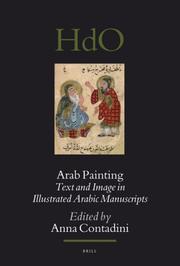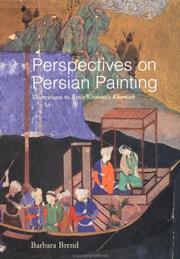| Listing 1 - 10 of 188 | << page >> |
Sort by
|
Book
ISBN: 0081010249 0081009259 9780081010242 9780081009253 Year: 2017 Publisher: Cambridge, Massachusetts ; London, England : Elsevier,
Abstract | Keywords | Export | Availability | Bookmark
 Loading...
Loading...Choose an application
- Reference Manager
- EndNote
- RefWorks (Direct export to RefWorks)
Power Supplies for LED Driving, Second Edition explores the wide use of light-emitting diodes due to their efficient use of power. The applications for power LEDs include traffic lights, street lamps, automotive lighting, architectural lights, theatre lighting, household light replacements, signage lighting (replacing neon strip lights and fluorescent tubes), LCD display backlighting, and many more. Powering (driving) these LED's is not always simple. Linear driving is inefficient and generates far too much heat. With a switching supply, the main issues are EMI, efficiency, and of course cost. This book covers the design trade-offs involved in LED driving applications, from low-power, to UB-LEDs and beyond. Provides a practical, hands-on approach to power supply design for LED drivers Contains detailed examples of what works throughout the design process Presents commentary on how the calculated component value compares with the actual value used, including a description of why the choice was made
LED lighting --- LED illumination --- Electric discharge lighting
Multi
ISSN: 14204681 ISBN: 3110335085 3110335026 1306205700 9783110335088 9781306205702 9783110335026 Year: 2013 Volume: Heft 17 Publisher: Berlin De Gruyter
Abstract | Keywords | Export | Availability | Bookmark
 Loading...
Loading...Choose an application
- Reference Manager
- EndNote
- RefWorks (Direct export to RefWorks)
In der Überlieferung der Mariendichtung des Priesters Wernher hat der Bildercodex D (um 1230) einen besonderen Rang: er gehört zu den frühesten illuminierten Handschriften in deutscher Sprache und bezeugt die späte Wirkung des Regensburg-Prüfeninger Federzeichnungsstils. Untersucht werden das erkennbar experimentierende Verfahren, mit dem die Bilder in den Text eingebaut werden sowie die in die Miniaturen eingelagerten Spruchbänder und deren Beitrag zur Verbindung von Text und Bild (mit Abdruck der Spruchbandtexte).
Book
ISBN: 1523100028 0881737003 9780881737004 9781523100026 9780881736991 9781482236835 1482236834 0881736996 9781003151838 1003151833 9788770223140 8770223149 9781000354737 1000354733 9781000355840 1000355845 Year: 2014 Publisher: Lilburn, Georgia : Boca Raton, Florida ; London, England : The Fairmont Press, Inc. : CRC Press, Taylor & Francis Ltd.,
Abstract | Keywords | Export | Availability | Bookmark
 Loading...
Loading...Choose an application
- Reference Manager
- EndNote
- RefWorks (Direct export to RefWorks)
Lighting. --- Illumination --- Buildings --- Light sources --- Environmental engineering
Book
ISBN: 1783320567 9781783320561 9781842658796 Year: 2014 Publisher: New Delhi Alpha Science International
Abstract | Keywords | Export | Availability | Bookmark
 Loading...
Loading...Choose an application
- Reference Manager
- EndNote
- RefWorks (Direct export to RefWorks)
Lighting. --- Illumination --- Buildings --- Light sources --- Environmental engineering
Book
ISBN: 1000019094 3866445377 Year: 2010 Publisher: KIT Scientific Publishing
Abstract | Keywords | Export | Availability | Bookmark
 Loading...
Loading...Choose an application
- Reference Manager
- EndNote
- RefWorks (Direct export to RefWorks)
This work presents a method to detect and classify varnish defects on wood surfaces. Since these defects are only partially visible under certain illumination directions, one image doesn't provide enough information for a recognition task. A classification requires inspecting the surface under different illumination directions, which results in image series. The information is distributed along this series and can be extracted by merging the knowledge about the defect shape and light direction.
detection --- illumination --- image series --- invariant features --- classification

ISBN: 1282601407 9786612601408 9004236619 9047422376 9789047422372 9781282601406 9789004157224 9004157220 9004186301 Year: 2007 Publisher: Leiden Boston
Abstract | Keywords | Export | Availability | Bookmark
 Loading...
Loading...Choose an application
- Reference Manager
- EndNote
- RefWorks (Direct export to RefWorks)
Arab painting, preserved mainly in manuscript illustrations of the 12th to 14th centuries, is here treated as an artistic corpus fully deserving of appreciation in its own terms, and not as a mere precursor to Persian painting. The book assembles papers by a distinguished list of scholars that illuminate the variety of material that survives in scientific as well as literary manuscripts. Because of the contexts in which the paintings appear, a major theoretical concern is, precisely, the relationship of painting to text. It rejects earlier scholarly habits of analysing paintings in isolation, and proposes the integration of text and image as a more satisfactory framework within which to elucidate the characteristics and functions of this impressive body of work. Arab painting, preserved mainly in manuscript illustrations of the 12th to 14th centuries, is here treated as an artistic corpus fully deserving of appreciation in its own terms, and not as a mere precursor to Persian painting. The book assembles papers by a distinguished list of scholars that illuminate the variety of material that survives in scientific as well as literary manuscripts. Because of the contexts in which the paintings appear, a major theoretical concern is, precisely, the relationship of painting to text. It rejects earlier scholarly habits of analysing paintings in isolation, and proposes the integration of text and image as a more satisfactory framework within which to elucidate the characteristics and functions of this impressive body of work.
Manuscripts, Arabic. --- Illumination of books and manuscripts, Arab. --- Arabic manuscripts --- Arab illumination of books and manuscripts --- Illumination of books and manuscripts, Arabic --- Islamic illumination of books and manuscripts --- Illumination of books and manuscripts, Medieval --- Painting, Medieval --- Illumination of books and manuscripts, Islamic --- Muslim illumination of books and manuscripts --- Illumination of books and manuscripts
Book
ISBN: 9004400508 9004386858 9789004400504 9789004386853 Year: 2019 Publisher: Leiden Boston
Abstract | Keywords | Export | Availability | Bookmark
 Loading...
Loading...Choose an application
- Reference Manager
- EndNote
- RefWorks (Direct export to RefWorks)
Nira Stone (1938-2013) was a scholar of Armenian and Byzantine Art. Her broad and close acquaintance with the field of Armenian art history covered many fields of Armenian artistic creativity. Nira Stone made notable contributions to the study of Armenian manuscript painting, mosaics, and other forms of artistic expression. Of particular interests are her researches on this art in its historical and religious contexts, such as the study of apocryphal elements in Armenian Gospel iconography, the place of the mosaics of Jerusalem in the context of mosaics in Byzantine Palestine, and of the interplay between religious movements, such as hesychasm, and Armenian manuscript painting.
Book
ISBN: 0192523627 0191840920 0192523619 9780192523617 9780191840920 0198802625 9780198802624 Year: 2018 Publisher: Oxford, United Kingdom
Abstract | Keywords | Export | Availability | Bookmark
 Loading...
Loading...Choose an application
- Reference Manager
- EndNote
- RefWorks (Direct export to RefWorks)
This title examines surviving medieval manuscripts from 1066 to 1272 and the people and processes involved in their creation. It addresses the reception and circulation of histories, and the different ways in which imagery and text could be used to create nuanced accounts of the past.
Book
ISBN: 1283952947 1780421575 9781780421575 9781859956175 9781283952941 Year: 2006 Publisher: [New York] [Parkstone International]
Abstract | Keywords | Export | Availability | Bookmark
 Loading...
Loading...Choose an application
- Reference Manager
- EndNote
- RefWorks (Direct export to RefWorks)
Quiconque a eu la chance de tenir entre ses mains des livres manuscrits du Moyen Âge a certainement été ému de ce contact direct avec un passé retrouvé. Les œuvres d'auteurs célèbres, ou parfois même à jamais anonymes, s'animent sous nos yeux : anciens traités de philosophie, de sciences naturelles et de théologie, romans de chevalerie et poèmes courtois, œuvres d'humanistes et de savants théologiens traduisant et commentant les classiques antiques, de voyageurs décrivant leurs incroyables pérégrinations, de chroniqueurs héroïques sauvant pour la postérité des événements de l'histoire emportés

ISBN: 1136854118 1136854185 1315028867 9781136854118 9781315028866 0700714677 9780700714674 9781136854187 9781136854255 9781138978331 Year: 2003 Publisher: London New York
Abstract | Keywords | Export | Availability | Bookmark
 Loading...
Loading...Choose an application
- Reference Manager
- EndNote
- RefWorks (Direct export to RefWorks)
This is a detailed study of the illustrations to Amir Khusrau's Khamsah, in which twenty discourses are followed by a brief parable, and four romances. Amir Khusrau (1253-1325) lived the greater part of adventurous life in Delhi; he composed in Persian, and also in Hindi. From the point of view of manuscript illustration, his most important work is his Khamsah (Quintet'). Khusrau's position as a link between cultures of Persia and India means that the early illustrated copies of the Khamsah have a particular interest. The first extant exemplar is from the Persian area in the late 14th century,
Amīr Khusraw Dihlavī, approximately 1253-1325. Khamsah -- Illustrations. --- Illumination of books and manuscripts, Iranian. --- Islamic illumination of books and manuscripts -- Iran. --- Illumination of books and manuscripts, Iranian --- Islamic illumination of books and manuscripts --- Visual Arts --- Art, Architecture & Applied Arts --- Painting --- Illumination of books and manuscripts, Islamic --- Muslim illumination of books and manuscripts --- Illumination of books and manuscripts --- Illumination of books and manuscripts, Persian --- Iranian illumination of books and manuscripts --- Persian illumination of books and manuscripts --- Amīr Khusraw Dihlavī,
| Listing 1 - 10 of 188 | << page >> |
Sort by
|

 Search
Search Feedback
Feedback About UniCat
About UniCat  Help
Help News
News